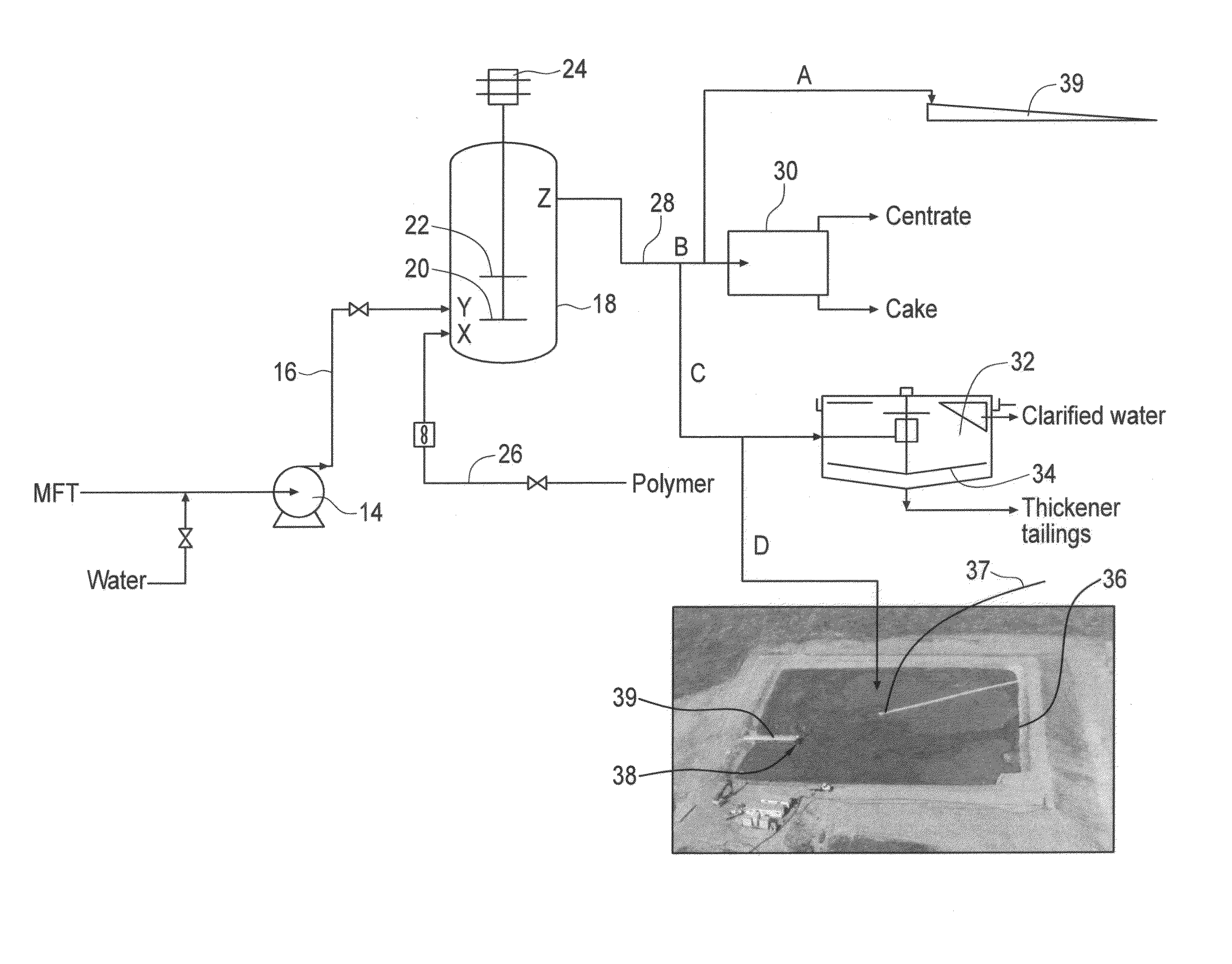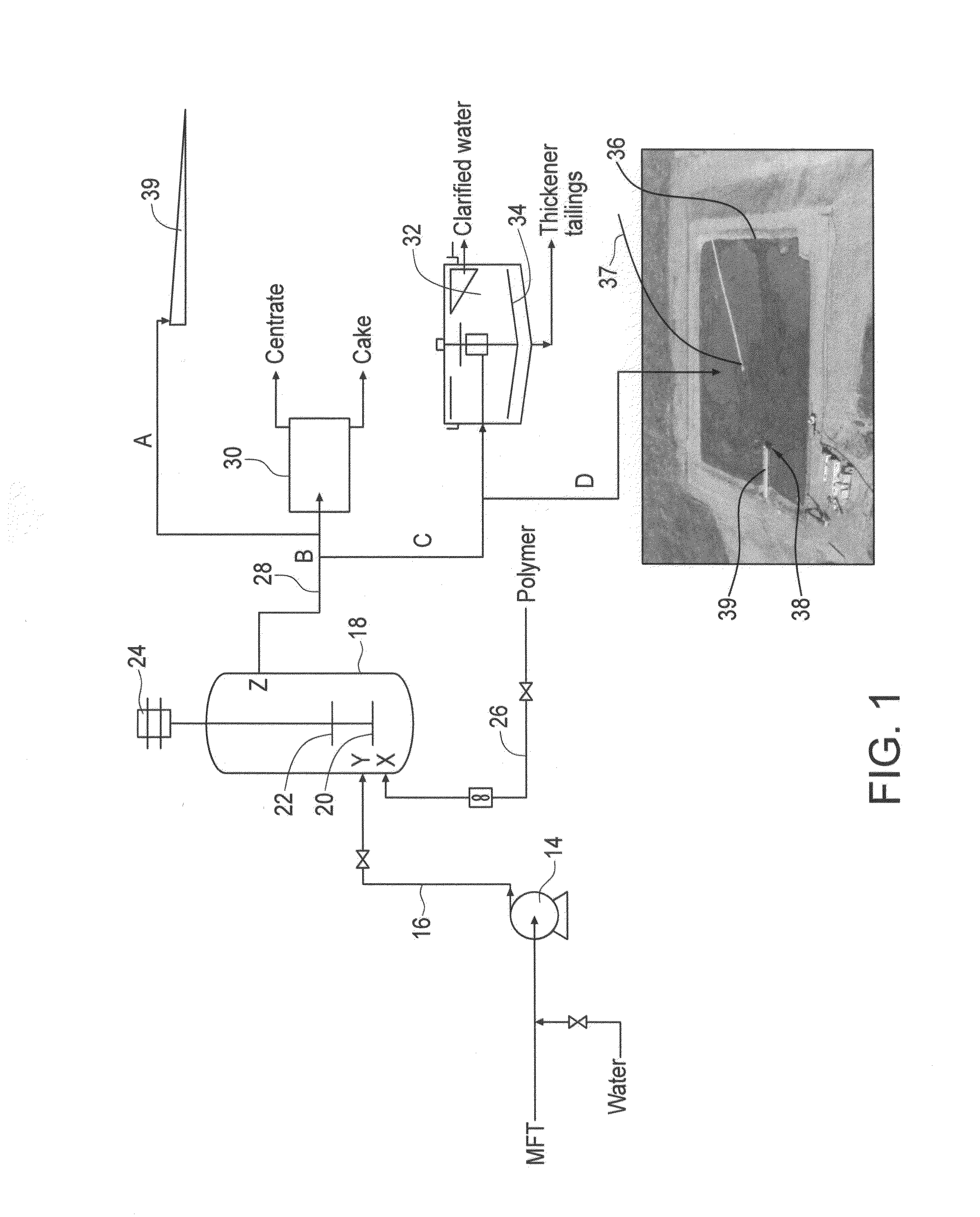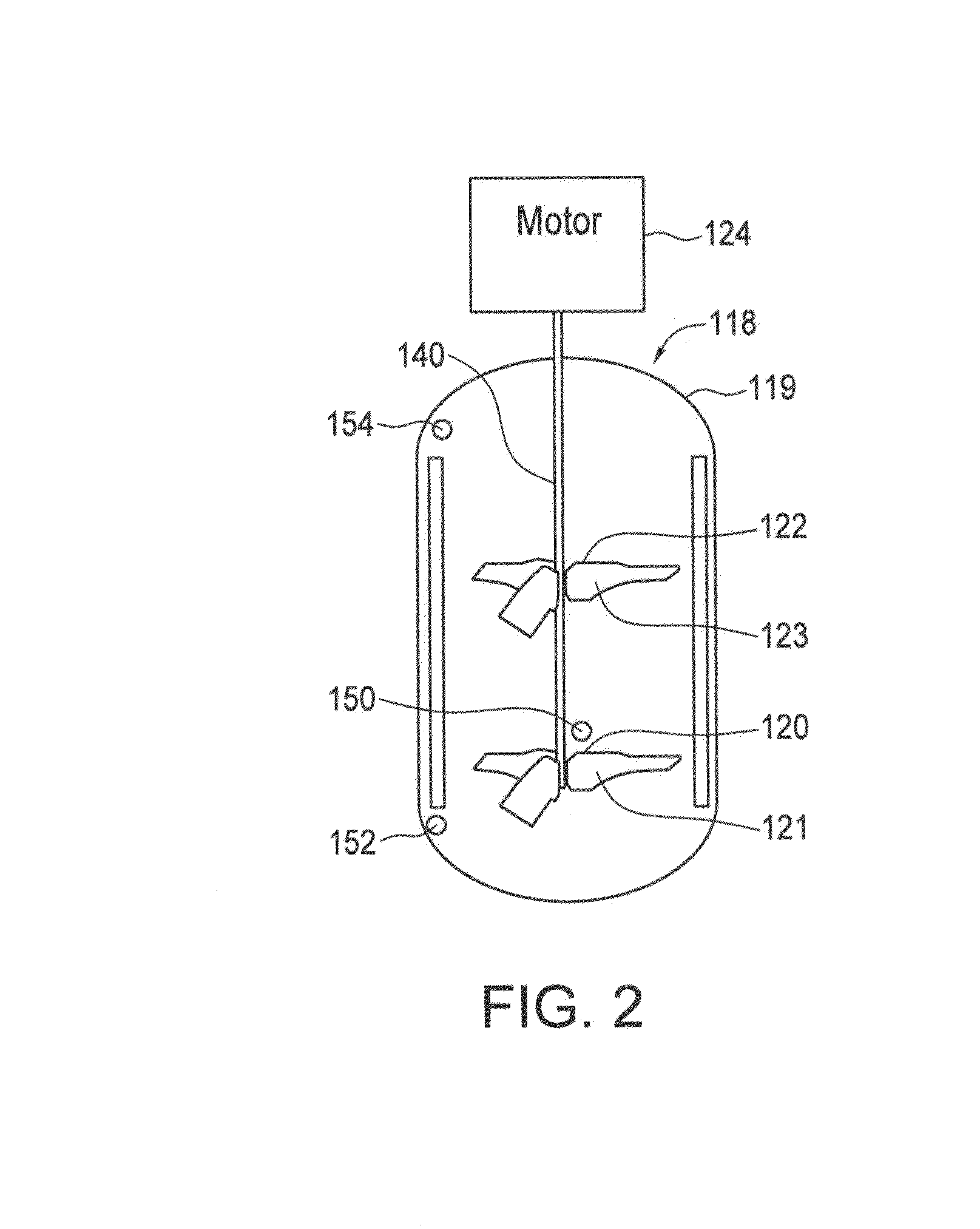Oil sands fine tailings flocculation using dynamic mixing
a technology of oil sands and flocculation, applied in the direction of multi-stage water/sewage treatment, quary waste water treatment, separation process, etc., can solve the problem of poor water release and achieve the effect of rapid dewatering
- Summary
- Abstract
- Description
- Claims
- Application Information
AI Technical Summary
Benefits of technology
Problems solved by technology
Method used
Image
Examples
example 1
[0074]FIG. 2 shows a stirred tank reactor design (i.e., dynamic mixer) that was used in this Example. As can be seen from FIG. 2, dynamic mixer 118 comprised a tank 119 (4 m3) with two hydrofoil impellers 120, 122 mounted on a single shaft 140. Each impeller 120, 122 consists of three impeller blades, 121 and 123, respectively. Polymer is continuously injected into the tank at polymer inlet 152 and FFT is continuously injected at the lower impeller level through FFT inlet 150 which comprised a quill that exited slightly past the tips of impeller blades 123. The flocculated FFT product is continuously withdrawn near the top of the dynamic mixer 118 from FFT outlet 154. Both impellers 120 and 122 are operated by motor 124.
[0075]In the following Example, dynamic mixer 118 was connected to a Lynx™ 60 Decanter Centrifuge as shown in embodiment B of FIG. 1. Samples of flocculated FFT were taken after the FFT exits outlet 154 and before centrifugation, i.e., a few meters before the Lynx™ 6...
example 2
[0093]FIG. 16 illustrates another stirred tank reactor design (i.e., dynamic mixer) useful in the present invention. As can be seen from FIG. 16, dynamic mixer 218 comprises a tank 219 having a flat blade turbine 220 comprising six flat blades (not shown) mounted therein on a single shaft 240. Included in the tank 219 were baffles 260.
[0094]In the following tests, the tank 219 had a diameter (T) of 315-mm, the baffle clearance (BC) to the tank wall was about 10 mm, the clearance between the turbine 220 and the tank bottom (C) was 65 mm, and the width of the baffles (WB) was about 6 mm. It was discovered that if the ratio of slurry height (H) to tank (mixer) diameter (H / T) is too large (e.g., 1.2), the slurry load is too high and the slurry is hard to be homogeneously mixed. If the H / T is too low (e.g., 0.4), the floc structures that are formed in the mixer could be easily oversheared. Similarly, if the impeller diameter (D) to tank (mixer) diameter (D / T) is too small (e.g., 0.4), th...
example 3
[0100]Polymer dosages were tested using the reactor tank of Example 2. Polymeric flocculant dosage is an important variable for high density FFT flocculation. For this series of tests, both SNF 3335 and SNF 3338 dosages were tested. The fixed test conditions are as follows: FFT feed solids content 20%, H / T 0.6 before flocculant addition, FBT impeller D / T 0.7, PN 7 hp / kgallon, flocculant injection / mixing time 3.5 minutes, and temperature ambient at 20° C.
[0101]FIGS. 27, 28 and 29 show the effects of SNF 3335 (concentration 1.7 g / L) dosages on yield stresses, CST and centrate solids contents of the flocculated FFT samples at time 0 of post-flocculant shear, respectively. It is clear that the flocculant dosages had tremendous effects on the FFT flocculation performances. When the SNF 3335 dosages were less than 800 g / t, the yield stress in FIG. 27 was very low. However, the yield stress was sharply increased to about 70 Pa at 800 g / t, and then to 85 Pa at 920 g / t. On the other hand, th...
PUM
| Property | Measurement | Unit |
|---|---|---|
| concentration | aaaaa | aaaaa |
| diameter | aaaaa | aaaaa |
| yield stress | aaaaa | aaaaa |
Abstract
Description
Claims
Application Information
 Login to View More
Login to View More - R&D
- Intellectual Property
- Life Sciences
- Materials
- Tech Scout
- Unparalleled Data Quality
- Higher Quality Content
- 60% Fewer Hallucinations
Browse by: Latest US Patents, China's latest patents, Technical Efficacy Thesaurus, Application Domain, Technology Topic, Popular Technical Reports.
© 2025 PatSnap. All rights reserved.Legal|Privacy policy|Modern Slavery Act Transparency Statement|Sitemap|About US| Contact US: help@patsnap.com



